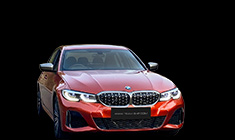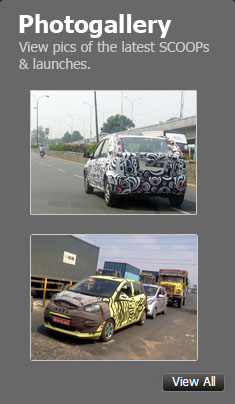News
Laliques I have for my 1937 Rolls-Royce Phantom III & history of my car
My car is one of the 21 Rolls-Royce Phantom IIIs sent to India for the Maharajahs.
BHPian jimmywalter recently shared this with other enthusiasts:
Here are some pictures of my Laliques and some of them on my car. The Cock head is not really seen, the Falcon is hard to see. They are all Vintage, pre-war Laliques, except the elephant, panther and tiger heads.
Here is a history and description of my car
From “Rolls-Royces of The Raj: Vast Wealth Reflected in Automobiles”
Published on February 11, 2010 by Mr Ghaz in Autos
The most complex Rolls-Royce ever, the V-12-powered Phantom III was an extraordinary engineering achievement, and it continues to be regarded as one of the finest automobile designs of the 1930s. Code-named “Spectre” during development, the Phantom III debuted at the 1935 Olympia Motor Show and garnered immediate acclaim as the world’s most technically advanced series-produced automobile chassis.
Its state-of-the-art, overhead-valve V-12 engine of 447in³ (7.32L), having a bore of 3.25 inches (82.5 mm) and a stroke of 4.5 inches (114.3 mm) with a maximum horsepower of 167.3 PS (165 bhp) (123 kW) at 3000 rpm - Specific output 22.5 bhp/liter 0.37 bhp/cu in. It is a pushrod engine with overhead valves operated by a single camshaft in the valley between the cylinder banks. It featured a one-piece aluminum alloy crankcase and cylinder block, aluminum cylinder heads and cast-iron wet cylinder liners.
The Phantom III also broke new ground as the first British car produced with hydraulic, self-adjusting valve tappets or, rather, a unique system of eccentric bushings in each individual rocker that was actuated by a small hydraulic piston; the eccentric bushing ensuring zero valve-lash at the rocker/valve interface. This system was changed to solid adjustable tappets in 1938.
The car has a 4-speed manual transmission with synchromesh on gears 2, 3 and 4. Overdrive was added in 1938. The car has 4-wheel servo-assisted brakes applied by cable (using a servo made under license from Hispano-Suiza). The radiator shell is of Staybrite steel. The Phantom III is unusual for its twin ignition systems, with two distributors, two coils and 24 spark plugs. Fuel is provided by a twin SU electric pumps. Wire wheels are fitted as standard, but many cars carry Ace wheel discs.
The sheer bulk of the car is reflected in its performance figures. An example tested in 1938 by The English Autocar magazine returned a top speed of 140 km/h (87½ mph) and a 0 - 60 mph (0 – 96 km/h) time of 16.8 seconds. The overall fuel consumption quoted from that road test was 28 liters per 100 kilometers (10 mpg-imp; 8.4 mpg-US).
No effort was spared to make the Phantom III chassis the ultimate in refinement and technical sophistication. The highly capable chassis was a rigid cruciform-braced, box-girder design with an independent wishbone front suspension and semi-elliptic rear springs. This chassis was sent off to test on 8 February 1937, with steering at the middle E rake and engine R78J. It was sent to Barker to be fitted with a seven-seater toured, design E7618, body number 7269 (before WWII, Rolls-Royce only made the chassis and engine with drive train). Included in the body were scuttle and wing lamps, a Safebeam Super fog lamp with Nebulite orange/amber glass on a chrome-plated bar between the headlamps. The car was finished in ivory with a brown hood with fawn lining. There was a Philco radio and a light to the back of the division rail. The main (back) seat had a special adjustment to base and squab, and it was 21 inches deep. The body cost £675. There was a flagstaff to the front, and a special mascot. The body was fitted with a division and occasional seats, and the rear seat was adjustable; the upholstery was in ivory leather throughout.
The current owner, Jimmy Walter, bought it at a US treasury auction in Edison, New Jersey in March of 2000. It, along with 4 others, had been confiscated from a NY investment banker.
The car was ordered by Allied Motors in Bombay on 19 August 1936 for 40-year-old Colonel His Highness the Maharaja Sir Rajaram Chhatrapati of Kolhapur, G.C.S.I., G.C.I.E. The finished car, costing £2085, was shipped on the SS “Somali” on 24 July 1937. His Highness, entitled to a 19-gun salute, also had two 1925 Rolls-Royce Ghosts, 45 EU and 95 EU. H.H. The Maharaja of Rewa owned it next and sold it to S.C.Sanghi of Sanghi Brothers (Indore) Pvt. Ltd. It was sold around 1968 to the Hon. Alan Clark, M.P. who lived at Saltwood Castle, near Hythe in Kent, and was registered 5942DH. It was in the USA from at least 1977, at one time in the ownership of James Leake and Tom Barrett.
In March 1975 the car was sold at auction in Geneva, and was for sale by dealers Coys of London in May that year, for US$ 38,000. It was for sale by Tom Barrett in Arizona for $550,000 in October 1989, and then for $600,000 a year later, with its mileage only 13,000. In January 1991 it did not sell at auction for $475,000, and it did not sell at an auction in Tokyo in 1992. It was then for sale for $395,000 in 1993. The Blackhawk collection had it for sale for $275,000 in 1996 (after it sold at auction in August 1995 for $136,000), when it was bought by an American investment banker. He went bankrupt owing money to the US Treasury and they auctioned it in March 2000 for $165,000 by Jimmy Walter, by which time it had been repainted red, had a polished aluminum hood (bonnet), and red top (hood). From the auction it went to Tampa, Florida, then to Santa Barbara, CA in 2002. In 2005 it was then shipped to Vienna, Austria where Mr. Walter now lives.
The known owners of this car were:
- 1937: Maharaja of Kolhapur
- Maharaja of Rewa
- S.C.Sanghi (Indore, IN)
- 1970: Henry R Wilkins (GB)
- 1985: James C Leake (US)
- 1989: Tom W Barrett (US) Lon Kreuger (US)
- 1997: David Hogue (US)
- 2000: Jimmy Walter
Photos of the car were used in the RR "Bulletin" in December 1937, and March, September and December 1938. In the first issue, the car was being used by the incoming Governor of Bombay (Sir Roger Lumley), and in the March 1938 issue, it is being used by the retiring Governor, Lord Brabourne, G.C.S.I., G.C.I.E. arriving at Ballard Pier. Lord Brabourne was the 5th Baron (1895-1939) and Governor from 1933-1937 before taking up the Governorship of Bengal from 1937 till his demise. It is interesting to note that the Governors had to borrow this car; the Phantom III for the Governor's use had not yet arrived (3CP100)
Most of the 727 PIII’s were produced in 1937. There were only two PIII open tourers made, this Barker and a Cooper, 3AX123.
This car engine has finished a complete overhaul by the renowned Mr. John Little, of Cowbit, UK, the expert’s expert on PIII’s (consultant to Rolls-Royce and all other refurbishers) and the major producer of remanufactured PIII parts.
21 Rolls-Royce Pre-War cars came to India
- 3AZ 47 Limousine Hooper 1936 July H.E Viceroy of India
- 3AZ 198 Limousine Hooper 1936 Dec Commander-in-Chief Delhi
- 3AX 87 Saloon Limousine Barker 1937 June The Nawab of Bahawalpur
- 3AX147 Limousine Gurney Nutting 1937 Feb The Maharaja Holkar of Indore
- 3AX201 Limousine Hooper 1937 Mar The Maharaja Gaekwar of Baroda
- 3BU 50 Landaulette Thrupp and Maberley 1937Mar The Maharaja of Darbhanga
- 3BU 76 Sedanca de Ville Barker 1937 June The Maharaja of Jaipur
- 3BU 82 Sedanca de Ville Hooper 1937June The Maharani of Nabha
- 3BU 86 Allweather Thrupp and Maberley 1937 April The Nawab of Bhopal
- 3BU 102 Limousine Hooper 1937 April The Maharaja of Jodhpur
- 3BU 106 Limousine Kellner 1937 Feb The Maharani of Baroda
- 3BU 134 Open Tourer Barker 1937 July The Maharaja of Kolhapur
- 3BU 198 Sedanca de Ville Windovers 1937 April The Maharaja of Rajpipla
- 3BT 75 Saloon Windovers 1937 July The Maharawal of Chhota Udepur
- 3BT 181 Allweather Barker 1937 Sept The Ruling Chief of Keonjhar State
- 3CP 112 Saloon Windovers 1937 Nov The Prince of Baroda
- 3CP 116 Cabriolet Windovers 1938 Feb The Prince of Berar
- 3CM 37 Saloon Park Ward 1938 Jan The Maharaja of Panchakote
- 3DL 26 Cabriolet Thrupp and Maberley 1938 July The Maharaja of Parlakimedi
- 3DL 90 Limousine Park Ward 1938 Sept Indian trials
- 3DL 96 4 Seater Sports Park Ward 1938 Nov The Maharaja Saheb of Morvi
- 3DL 200 Drop Head coupe Park Ward 1939 Nov High Commissioner for India
Between 1907 and 1947-the year of India’s independence as a nation - a total of 36,000 Rolls-Royces were produced in Great Britain; about 1,000 were exported to India. In 1908 a six-cylinder Rolls-Royce christened the Pearl of the East won first prize at the Bombay Motor Show. The car went on to win the grueling 620-mile Bombay to Kolhapur rally and was later bought by Maharaja Scindia of Gwalior.
Within a few years, the reputation of Rolls-Royce had spread among the Indian ruling classes; its members vied for preeminence in acquiring quantities of these superbly appointed vehicles. The Maharaja of Patiala, who died in 1938, owned no fewer than 38, while the Maharaja of Mysore was the last of the notable bulk buyers, placing orders in 1947 for 8 Rolls-Royces as well as 9 Bentleys. The Maharaja Jamsaheb of Nawangar had a garage that could accommodate 450 cars, including 8 Rolls-Royces. Each automobile had its own chauffeur as well as its own cleaner.
Various body shops altered Rolls-Royces to create many bizarre and extravagant vehicles that satisfied the sometimes eccentric whims of their clients. For example, J.W. Brooke of Lowestoft, England, fulfilled the order of the maharaja of Nabha, who demanded a car in the shape of a swan. Brooke made it in such a way that the exhaust discharged through the beak of the giant bird. The maharaja of Patiala, on the other hand, preferred a 1911 Rolls-Royce upholstered in salmon-pink silk, with the bodywork painted to match. The diamond-studded dashboard was so valuable that whenever the car was serviced, it had to be protected by four armed guards.
The remarkable durability of Rolls-Royce cars under the toughest conditions created a demand for them in some of the most mountainous regions of the Indian subcontinent. A Rolls-Royce acquired by one of the ranas of Nepal was carried across the Himalayas to Katmandu by porters, who used rafts to transport it across rivers. The Maharani of Udaipur converted her 1934 Thrupp & Maberly Rolls-Royce into a jeep, and a number of vehicles were converted for use on use on tiger hunts.
The nawab of Bahawalpur even relied upon Rolls-Royces for his personal safety. He had a Silver Ghost converted into an armored car, complete with a gun turret.
An export ban introduced in 1969 meant that these opulent cars could no longer be taken out of India. Some remain in princely hands, and a number have survived to this day in excellent condition. The Nizam of Hyderabad’s 1913 Silver Ghost has only 345 miles on its odometer.












Check out BHPian comments for more insights and information.



















